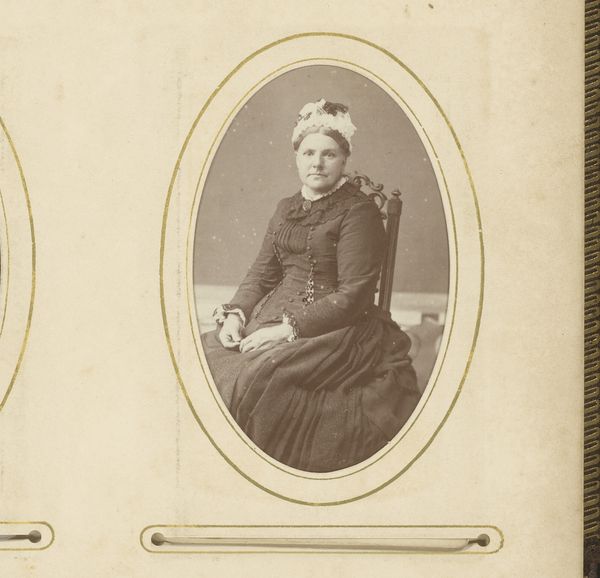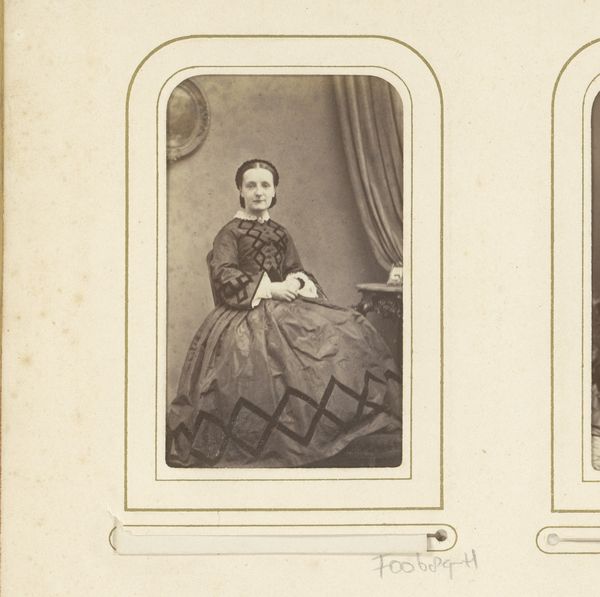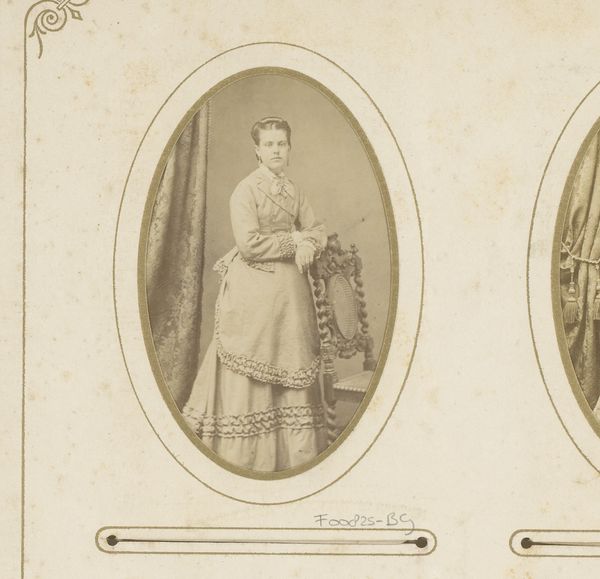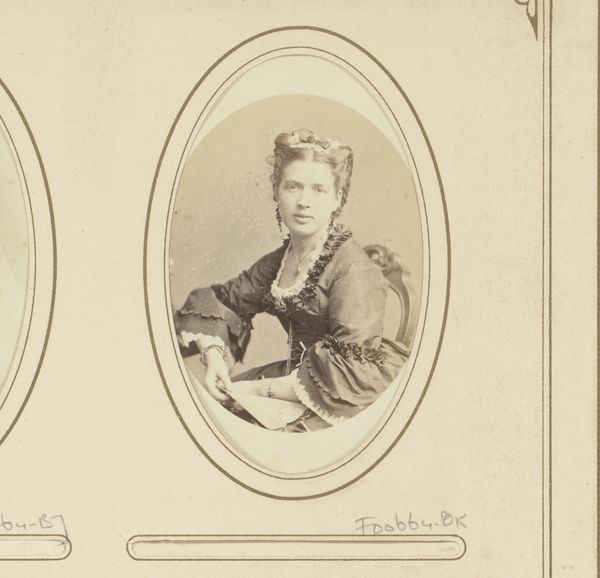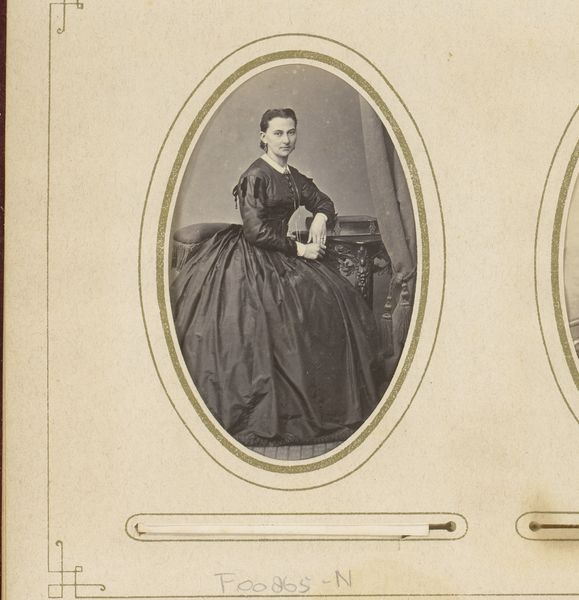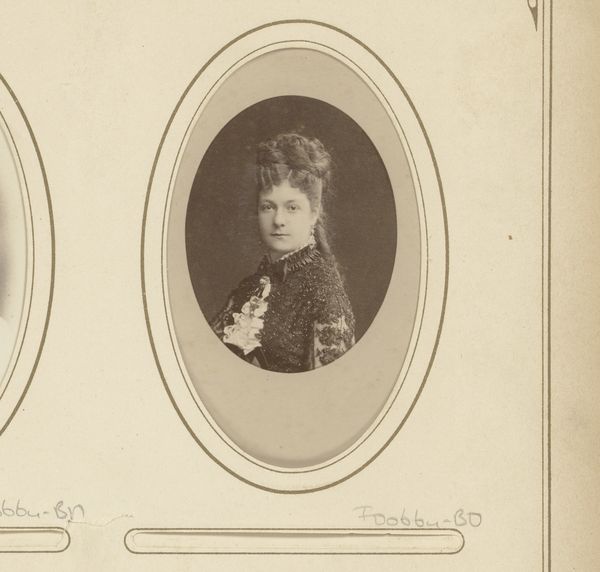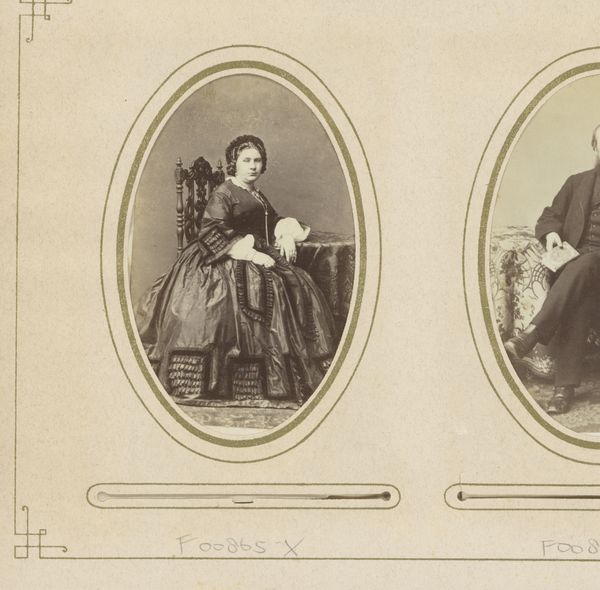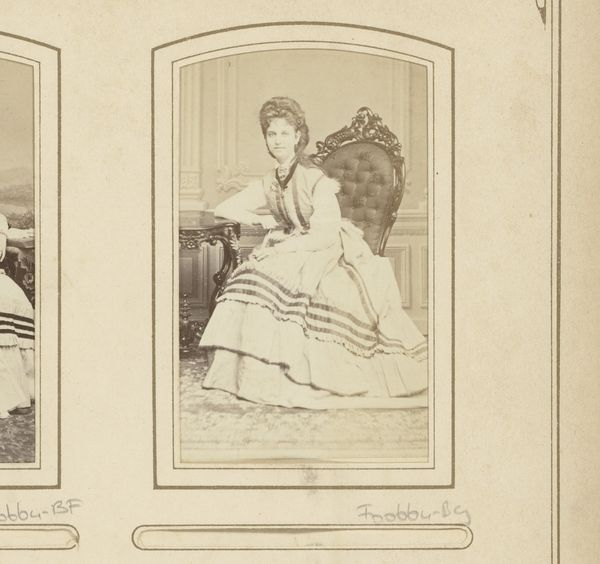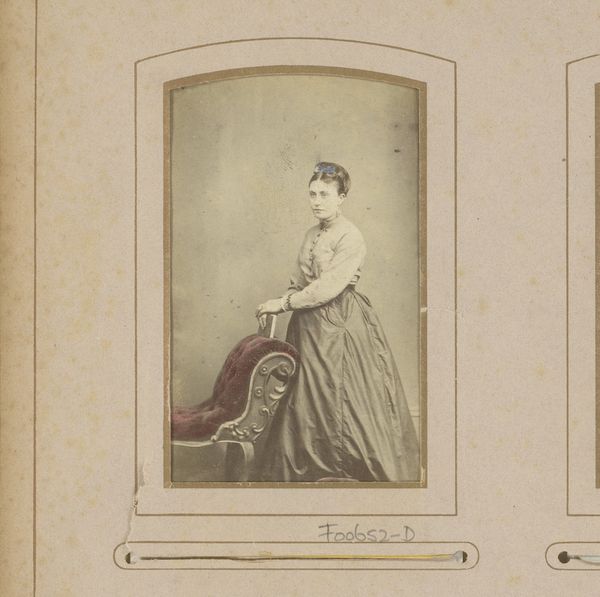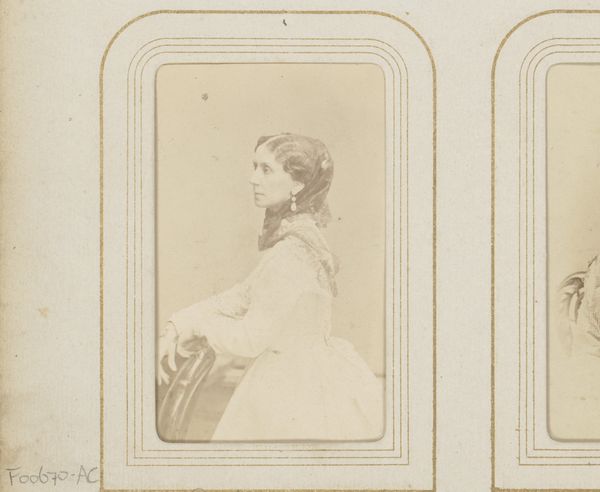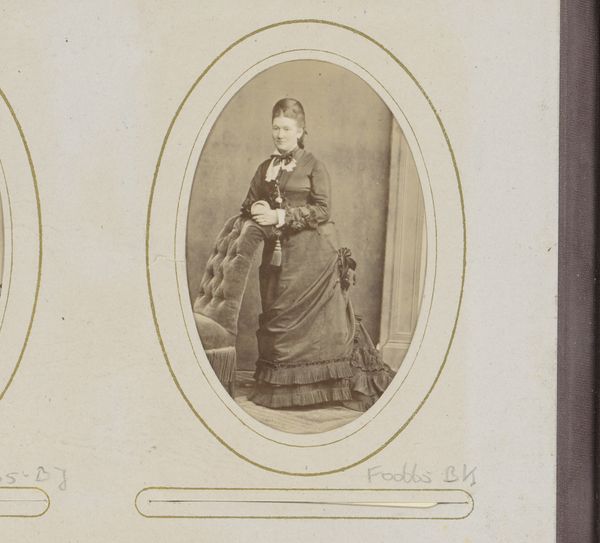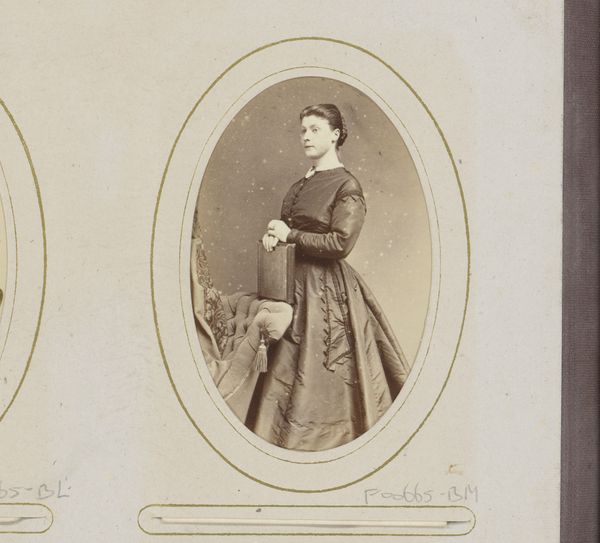
photography
#
portrait
#
photography
#
historical photography
#
19th century
#
realism
Dimensions: height 82 mm, width 50 mm
Copyright: Rijks Museum: Open Domain
Curator: This captivating photograph, entitled "Portret van een staande vrouw bij een stoel" which translates to "Portrait of a standing woman by a chair," was captured sometime between 1863 and 1896. Its attribution belongs to Dechamps et Cie. It presents a fascinating example of 19th-century portraiture. Editor: She looks rather severe. Almost unapproachable. There’s a formality to the pose and expression, a real sense of societal expectation. Curator: Absolutely. Photography at this time served a very specific function. Consider the context – photography was becoming more accessible but was still relatively novel. Portraits were carefully constructed statements about social standing and character. Note the detailed fabric of her dress and even the placement of the chair; these choices weren't accidental. Editor: And yet, I wonder what the portrait suppresses. The clothing, of course, denotes status and class. But the sternness in the face and eyes may be masking more than this one image suggests. It reminds me how constricting life could be, particularly for women, with very defined roles within very defined social boundaries. The lace cuffs and neat hairstyle look so prim! Curator: That controlled aesthetic absolutely speaks to the era's values, especially when you consider the growth of photography studios and the impact this has for working artists who are producing a high volume of commissioned portraits that catered to this exact clientele. Editor: So, in one sense, these photographs helped uphold this status quo? Even perpetuate it? Curator: To a certain extent. This photograph and others like it also democratized portraiture to an extent—they offered access to self-representation that was previously only available to the wealthiest patrons of painted portraits. It is, nevertheless, mediated through specific social mores and the sitter’s understanding of the photographic process, making each work so rich with complexity. Editor: That really prompts me to question our present values. If someone were to view us similarly, hundreds of years later, will they consider what these images hide? Or will we succeed at curating our self-image even better than her? Curator: Those are valuable considerations to hold. It's a credit to these compelling historical portraits that we’re still unpacking the carefully crafted narratives they present to us. Editor: Precisely. It's more than a picture—it's an invitation to engage with the past and critique our present.
Comments
No comments
Be the first to comment and join the conversation on the ultimate creative platform.

